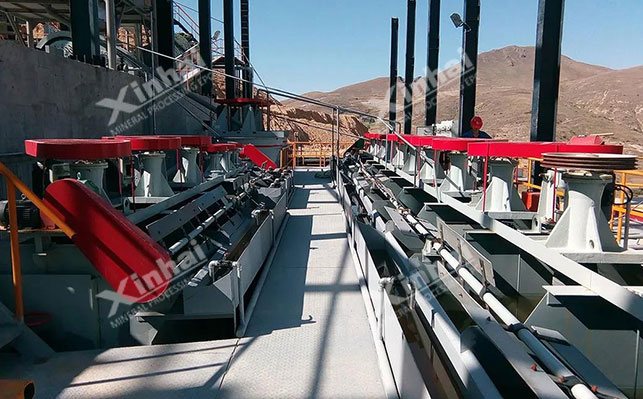Bornite, also known as peacock ore due to its iridescent tarnish, is a copper iron sulfide mineral with the chemical composition Cu5FeS4. It is an important copper ore mineral and is widely mined for its copper content. This article explores the properties of bornite and the various methods employed in its beneficiation.

Physical Properties
Color: Freshly broken bornite is brown to copper-red, but it tarnishes to an iridescent purple, blue, or black, earning it the nickname "peacock ore."
Luster: Metallic
Hardness: 3 on the Mohs scale
Specific Gravity: Approximately 5.0 to 5.1
Crystal System: Orthorhombic
Chemical Properties
Chemical Formula: Cu5FeS4
Composition: About 63.3% copper, 11.1% iron, and 25.6% sulfur.
Reactivity: Bornite readily reacts with sulfuric acid and other strong acids, making it amenable to certain leaching processes.
The beneficiation of bornite involves several steps to separate the valuable copper content from the surrounding gangue minerals. The following are the primary methods used in the beneficiation of bornite:
1. Crushing and Grinding
The first step in the beneficiation process is crushing and grinding the ore to a fine size. This increases the surface area of the ore, making it easier to extract the copper during subsequent processing steps.
2. Froth Flotation
Froth flotation is the most commonly used method for the beneficiation of bornite. The process involves the following steps:
Conditioning: The ground ore is mixed with water and chemicals to create a slurry. Reagents such as xanthates, which act as collectors, and frothers are added to promote the formation of froth.
Flotation: The slurry is aerated in flotation cells, creating bubbles to which the copper-bearing minerals attach. The froth, enriched with copper minerals, is skimmed off the surface for further processing.
Cleaning and Re-cleaning: The concentrate is subjected to additional stages of flotation to improve the purity and grade of the copper concentrate.

3. Hydrometallurgical Processes
Hydrometallurgical methods are also used to extract copper from bornite, especially for low-grade ores:
Leaching: Bornite can be treated with acidic or basic solutions to dissolve the copper. Sulfuric acid is commonly used in heap leaching and in-situ leaching operations.
Solvent Extraction and Electrowinning (SX-EW): The leach solution containing dissolved copper is subjected to solvent extraction to concentrate the copper. The copper is then recovered from the solution by electrowinning, producing high-purity copper cathodes.
4. Pyrometallurgical Processes
For high-grade bornite ores, pyrometallurgical methods are often used:
Roasting: The ore is heated in the presence of oxygen, converting the sulfides into oxides.
Smelting: The roasted material is melted in a furnace, separating the copper from the slag. The molten copper can then be cast into anodes for further refining.
Converting: The blister copper produced from smelting is further refined in a converter to remove impurities and produce high-purity copper.
Bornite is a significant copper ore mineral with unique physical and chemical properties that make it valuable for copper extraction. The beneficiation of bornite involves a combination of physical and chemical processes to efficiently recover the copper content. Understanding the properties of bornite and selecting the appropriate beneficiation methods are crucial for optimizing the recovery of copper from this valuable mineral.